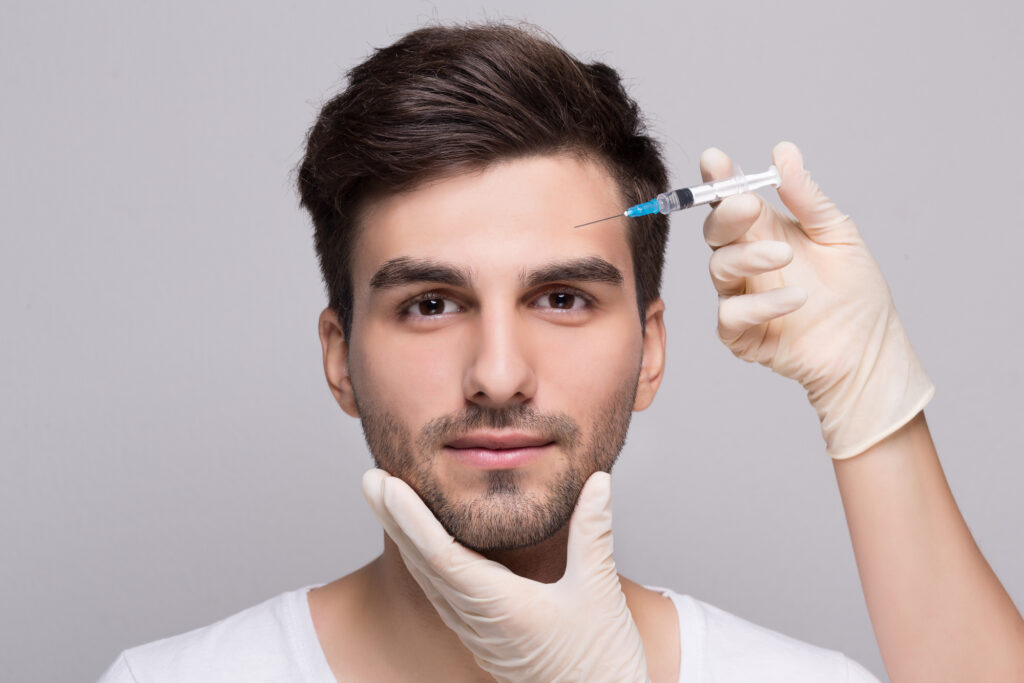
Choose between Botox and dermal fillers based on your concerns, treatment objectives, and desired results.
As individuals embark on the journey to achieve timeless beauty, the realm of cosmetic procedures becomes a captivating avenue for addressing the inevitable signs of aging. Two prominent contenders in this quest are dermal fillers and Botox, each offering unique advantages in the pursuit of revitalized skin. This article seeks to illuminate the disparities between these two procedures, providing valuable insights to empower individuals to make informed decisions about their skincare journey.
Understanding Dermal Fillers
Dermal fillers, often called soft tissue fillers, are injectable substances that are painstakingly made to restore fullness and volume to certain areas of the face. The primary objective is to counteract the effects of losing volume, plumping sagging skin, and reducing fine lines and wrinkles. Typically formulated with hyaluronic acid or other biocompatible substances, dermal fillers boast the ability to deliver immediate results by enhancing volume beneath the skin’s surface.
Elasticity in young skin is critically dependent on hyaluronic acid, an inorganic chemical that is well-known for its ability to attract and retain water. Dermal fillers, leveraging this powerful component, target various concerns, including nasolabial folds, marionette lines, sunken cheeks, and thin lips. Beyond the immediate aesthetic enhancements, hyaluronic acid triggers collagen production, ensuring sustained skin health and elasticity.
Dermal fillers are expertly designed to treat static wrinkles, which are visible even when the face is at rest. They offer a smoothing and volumizing effect while providing instant volume. Results can last anywhere from six months to two years, depending on the filler type and the area treated.
Botox: The Dynamic Wrinkle Warrior
On the other hand, Botox—known as Botulinum Toxin—is a neurotoxin that temporarily paralyzes or relaxes muscles. It mainly targets dynamic wrinkles, which are caused by repeated facial expressions like frowning or smiling. Commonly administered to areas prone to wrinkles, Botox works by softening existing wrinkles and preventing the formation of new ones by temporarily inhibiting muscle movement.
Botox treatments stand out for their swiftness and relatively painless nature, with noticeable results manifesting within days to a week. The effects typically endure for three to four months, with regular treatments potentially extending the duration as muscles adapt to reduced movement.
Key Differences
Targeted Concerns:
- Botox is tailored for dynamic wrinkles influenced by muscle movement.
- Dermal fillers excel at addressing static wrinkles while simultaneously restoring lost volume.
Mechanism of Action:
- Botox orchestrates temporary muscle relaxation, countering wrinkles from facial expressions.
- Dermal fillers add volume, effectively filling in wrinkles and enhancing facial features.
Duration of Results:
- Botox’s impact typically spans three to four months.
- Dermal filler outcomes fluctuate, spanning several months to a couple of years.
Treatment Areas:
- Botox commonly targets the upper face, mitigating forehead lines, frown lines, and crow’s feet.
- Dermal fillers offer versatility and are apt for diverse facial areas to augment volume and contour.
Choosing the Right Option
The selection between dermal fillers and Botox hinges upon individual concerns, treatment goals, and desired outcomes. For those emphasizing volume loss and the restoration of youthful contours, dermal fillers often emerge as the preferred choice. Conversely, when dynamic wrinkles resulting from facial expressions are the primary concern, Botox surfaces as the optimal solution.
Consulting with a qualified medical professional proves integral, ensuring personalized treatment recommendations aligned with unique facial anatomy and aesthetic aspirations. A comprehensive assessment guarantees a tailored approach fostering natural-looking, rejuvenated skin, prioritizing safety and satisfaction.
Conclusion
In conclusion, while both dermal fillers and Botox present effective solutions in the battle against aging signs, their operational disparities cater to distinct concerns. Empowering individuals with a nuanced understanding of these differences facilitates informed decisions, enabling the selection of a skincare journey aligned with individual needs—a journey that unveils the secret to timeless beauty and confidence.


